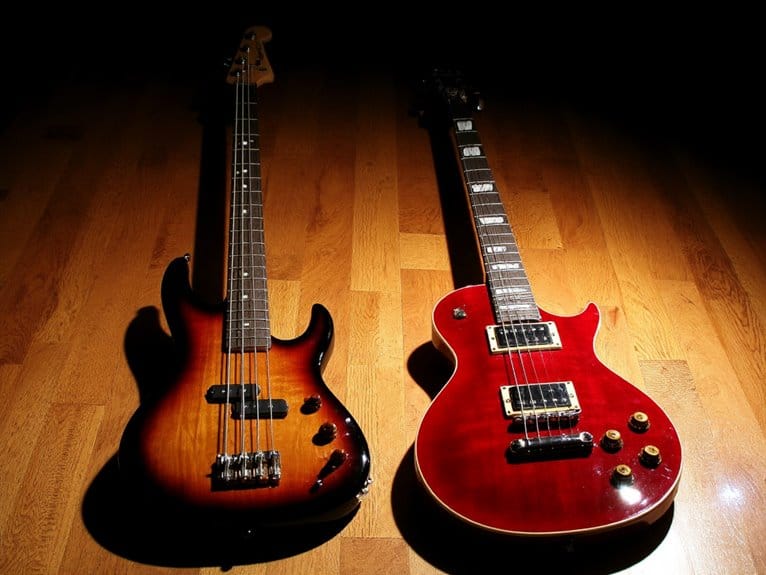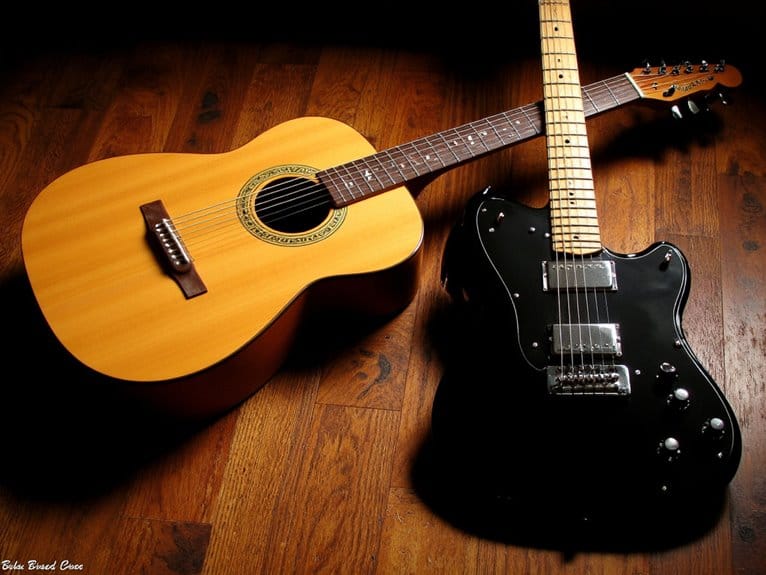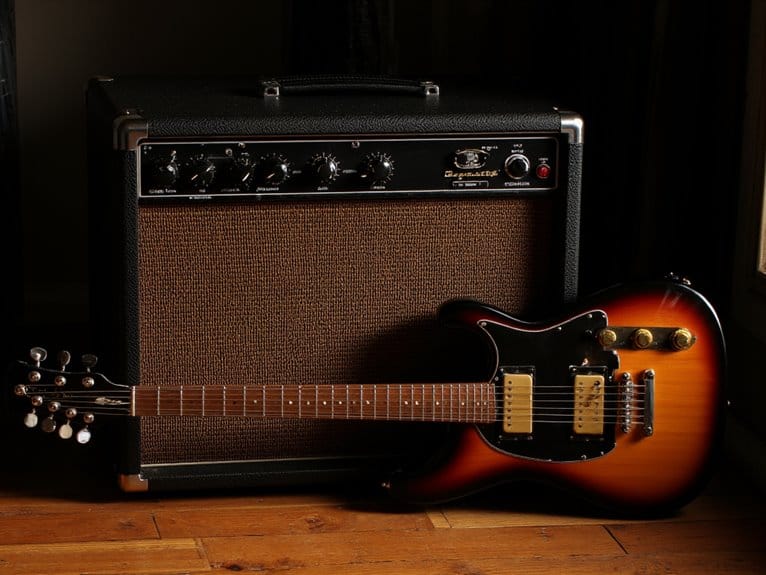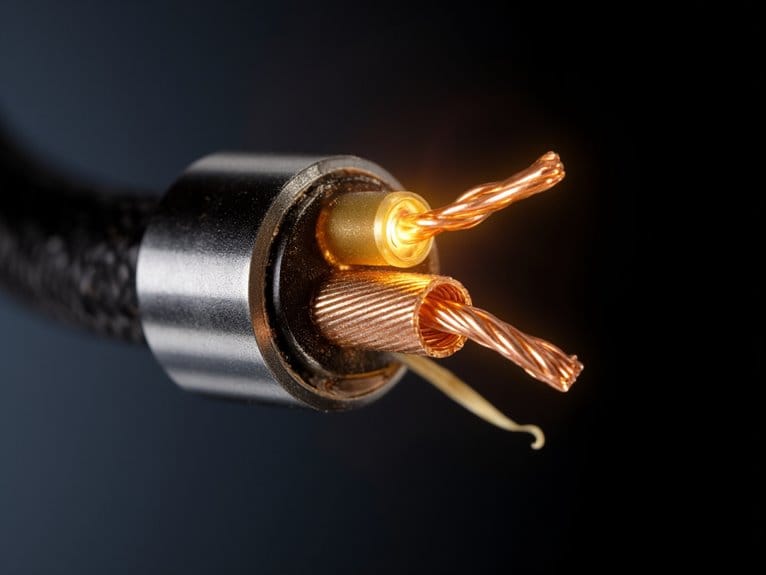Drum Head Guide: Choosing the Right Heads for Your Sound
Your drumhead choice fundamentally shapes your sound, with batter heads serving as the striking surface while resonant heads control sustain and tone reflection. Single-ply heads offer maximum sensitivity but wear faster, whereas double-ply construction provides focused control with enhanced durability. Clear heads deliver bright, punchy attacks, coated surfaces produce warmer tones, and thickness ranging from 7-14 mil affects resonance depth and decay speed—understanding these interactions reveals your kit’s true potential.
We are supported by our audience. When you purchase through links on our site, we may earn an affiliate commission, at no extra cost for you. Learn more.
Notable Insights
- Match batter and resonant head selection to your playing style, with thicker heads for heavy hitters and thinner for sensitivity.
- Choose coated heads for warmer, controlled tones or clear heads for bright, punchy attack with extended sustain.
- Select single-ply heads for maximum responsiveness or double-ply construction for focused tone control and increased durability.
- Coordinate your entire kit’s head selection for tonal consistency rather than replacing individual heads piecemeal.
- Consider your performance environment and musical genre when selecting heads, adapting choices to specific musical demands.
Understanding Batter Vs Resonant Drumheads
When you’re setting up a drum kit, understanding the fundamental difference between batter and resonant heads becomes essential for achieving the sound you’re after. I’ve found that many drummers overlook this distinction until they start wondering why their drums don’t respond the way they expect.
The batter head importance lies in its role as your primary striking surface, typically thicker and more durable to withstand constant stick impact, while the resonant head effects encompass everything from sustain length to tonal character. You can quickly identify which head is which by looking for the logo facing upright on the drum shell, which indicates the batter side.
Your resonant head, positioned opposite the batter side, reflects air pressure waves back through the shell, creating that sustained vibration that gives drums their full voice and determines whether your kit sounds punchy or resonant. It’s crucial to remember that snare-side heads cannot be used interchangeably as batter heads due to their specialized construction and thickness requirements.
Drumhead Materials and Ply Construction Options
The drumhead material you choose fundamentally shapes your drum’s voice, and I’ve discovered that most drummers don’t realize how greatly different synthetic materials can alter their sound until they start experimenting with various options.
Mylar dominates the market because of its synthetic durability and consistent tuning stability, while Kevlar heads handle extreme punishment from heavy hitters.
Coated surfaces produce warmer, controlled tones, whereas clear heads deliver brighter attack and sustain.
Ply variations greatly impact your sound—single-ply heads offer maximum sensitivity and resonance but sacrifice longevity, while double-ply construction provides focused tone control with reduced overtones. Double-ply heads also feature a more limited tuning range compared to their single-ply counterparts.
I’ve found that understanding these material differences helps you match drumheads to your playing style and musical requirements.
How Thickness Affects Your Drum Sound
After spending countless hours tuning drums and swapping heads, I’ve learned that thickness isn’t just about durability—it’s the secret weapon that controls your drum’s fundamental voice, sustain characteristics, and frequency response in ways that’ll completely transform your sound.
Head thickness dramatically shapes your tone dynamics, with thicker heads producing deeper resonance and extended sustain while thinner options deliver brighter attack with quicker decay. Standard heads range from 7-14 mil, where each measurement creates distinct tonal fingerprints that’ll either complement or clash with your musical style.
- Thin heads create that crisp “crack” cutting through dense jazz arrangements like a knife through butter.
- Thick heads rumble with stadium-filling power that makes rock anthems feel earth-shaking.
- Medium thickness provides the sweet spot between sensitivity and durability for versatile players.
Clear, Coated, and Ebony Finishes Explained
Now that you understand how thickness impacts your sound, you’ll need to choose between clear, coated, and ebony finishes, each offering distinct tonal characteristics that can dramatically alter your drum’s voice.
Clear heads deliver bright, punchy attack with extended sustain, while coated heads provide warmer, more controlled tones with natural dampening from their textured surface.
I’ve found that ebony heads offer a compelling middle ground, combining the brightness of clear heads with unique tonal coloration that works beautifully in both aesthetic and sonic applications.
Tonal Characteristics Comparison
When choosing between clear, coated, and ebony drum heads, I’ve found that understanding their distinct tonal characteristics can make the difference between a drum sound that cuts through your mix and one that gets buried in the background.
Clear heads deliver that bright, glassy tone with pronounced attack and longer sustain duration, making them perfect for aggressive styles.
Coated heads offer midrange warmth with their textured surface dampening higher frequencies, creating a controlled, articulate response that’s ideal for brush work.
Ebony heads mirror clear heads’ brightness while adding visual distinction.
When recording these different head types, proper microphone placement becomes crucial for capturing each head’s unique tonal characteristics without unwanted bleed from cymbals and other drums. The choice of drum heads significantly impacts your overall performance sound quality, much like how cymbal selection affects the tonal balance of your entire kit. Dynamic microphones are particularly effective for capturing the nuanced differences between head types during recording sessions.
- Clear heads sound like breaking glass – sharp, transparent, and cutting
- Coated heads feel like warm honey – smooth, controlled, and focused
- Ebony heads appear mysterious yet sing brightly like their clear counterparts
Choosing Your Finish
While tonal characteristics give you the foundation for understanding drumhead behavior, the finish you choose ultimately determines how those characteristics translate into your specific playing situation.
I’ve learned that this decision often comes down to three distinct options that each serve different musical purposes.
Clear heads deliver that bright, cutting attack you’ll want for rock and metal, offering maximum shell visibility while producing pronounced high frequencies and extended sustain.
Coated heads provide warmth and brush compatibility that jazz players crave, though I’ll admit the white texture can wear down over time in heavy-hit zones.
Ebony heads split the difference tonally, matching clear heads‘ brightness while satisfying your drumhead aesthetics preferences with their sleek black appearance.
Your sound preferences should guide this choice more than visual appeal alone.
Specialty and Vented Drumhead Features
- Center-dot heads cutting through dense mixes with laser-focused attack
- Kevlar heads surviving aggressive metal drumming sessions without compromise
- Hydraulic heads producing warm, vintage tones reminiscent of classic rock albums
- Center-dot heads cutting through dense mixes with laser-focused attack
Matching Drumheads to Your Playing Style
Beyond the specialized features that make certain drumheads stand out, I’ve found that your playing style ultimately determines which heads will serve you best.
Honestly, this decision can make or break your sound regardless of how expensive your kit might be. If you’re a light player focusing on jazz or ambient styles, single-ply heads offer the sensitivity and overtone richness you need, though you’ll replace them more frequently than I’d like to admit.
Heavy hitters should prioritize double-ply heads for their durability and attack projection, essential for cutting through loud mixes.
Understanding drumhead compatibility with your playing style nuances means matching thickness, coating, and construction to your dynamic range and musical context.
Essential Selection Tips for Every Drummer
Three fundamental principles have guided my drumhead selection process over the years, and mastering these basics will save you countless hours of frustration and money spent on heads that don’t match your needs.
First, coordinate your entire kit’s head selection rather than replacing individual drums piecemeal, ensuring consistent tonal character across toms, snare, and bass drum.
Second, budget for regular replacement cycles based on your playing frequency and intensity, as worn heads compromise both sound quality and tuning stability.
Third, match your head thickness and ply configuration to your primary musical context, whether that’s intimate jazz sessions or stadium rock performances. Heavy hitters should prioritize two-ply constructions like Evans G2 and EC2S models for enhanced durability and volume handling.
Just as cymbals require material consideration with B20 bronze alloy construction affecting tonal complexity, drumheads benefit from understanding how construction materials influence your overall sound character. Consider tunable tension options that allow you to customize your playing experience and adapt to different musical situations.
Essential maintenance tips include:
- Store drums in climate-controlled environments to prevent premature cracking
- Inspect heads monthly for dents, wear patterns, and coating deterioration
- Replace snare-side heads when they show visible creasing near the bearing edge
Frequently Asked Questions
How Often Should I Replace My Drumheads?
Your drumhead lifespan depends on usage intensity. Frequency recommendations suggest replacing batter heads every 3-6 months for heavy players, annually for casual drummers. You’ll replace resonant heads less often, roughly every third batter head change.
Can I Mix Different Brand Drumheads on the Same Drum Kit?
You can absolutely mix different brand drumheads on your kit. Brand compatibility isn’t an issue, and sound blending across brands lets you create unique tonal combinations tailored to each drum’s specific needs.
What’s the Proper Way to Install a New Drumhead?
You’ll avoid common installation mistakes by loosening tension rods evenly, cleaning the bearing edge thoroughly, and following proper drumhead installation tips like using cross-lug tightening patterns for even tension distribution.
On a final note
You’ve now got the foundation to transform your drum sound through strategic head selection, though I’ll admit the sheer number of options can feel overwhelming at first. Remember that your choice between single-ply attack and double-ply durability, coated warmth versus clear brightness, and thick punch against thin sensitivity will ultimately define your kit’s voice. Don’t overthink it—start with quality basics, experiment gradually, and let your ears guide you toward your signature sound.







